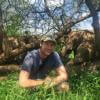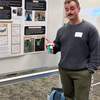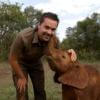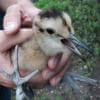Sensors already equip a range of tools to enhance monitoring capacity for conservation. Some of the higher bandwidth technologies, like camera traps and acoustic monitoring systems, have been essential elements of the conservation toolkit for decades, and thus have enough users that we've created dedicated WILDLABS groups to address them. But a whole range of lower bandwidth sensors beyond these core technologies are being increasingly integrated into conservation monitoring systems, and offer rich new insights into the wildlife and ecosystems we're all working to protect. As with many technologies, cost and access have historically been challenges to the adoption of new sensors, but with low-cost and open-source solutions on the rise, we're excited to see what the future of this space holds.
Getting Started with Sensors:
- Watch Shah Selbe's Tech Tutors episode on scaling FieldKit, an open-source conservation sensor toolbox, from a project to a successful conservation tech product.
- Check out our Virtual Meetup about Low-Cost, Open-Source Solutions in conservation tech, including a talk by Alasdair Davies on the Arribada Initiative's work with thermal sensors in early warning systems.
- For a more in-depth introduction, watch the first video in our datalogger mini-series: Freaklabs: How do I get started with Arduino?
In this group, you'll meet others who are using and innovating diverse sensors in their work, discuss ways to make sensors more effective & accessible for conservationists, learn about what sensors are already helping us accomplish in the field, and have the opportunity to ask and answer questions. Join this group to get started!
Header image: Emma Vogel, University of Tromsø
No showcases have been added to this group yet.
I am a scientist with research background in evolutionary-ecological genomics and have impact at the senate level to prevent a government viral biocontrol release. UK based and looking to connect with passionate dreamers ready to shift paradigms
- 0 Resources
- 3 Discussions
- 9 Groups
Woodland Park Zoo

- 0 Resources
- 5 Discussions
- 8 Groups
- 0 Resources
- 0 Discussions
- 14 Groups
Zoological Society London (ZSL)
Technical Project Manager in ZSL's Conservation Technology Unit



- 2 Resources
- 26 Discussions
- 7 Groups
finding ecological solutions using sound and conservation tech
- 0 Resources
- 0 Discussions
- 4 Groups
Currently a data scientist in industry working on mechanistic models of risk, previously worked on modeling coral reefs. I am interested in the potential for emerging technologies and new ideas to help us solve environmental crises.
- 0 Resources
- 0 Discussions
- 14 Groups
Fauna & Flora
- 0 Resources
- 3 Discussions
- 10 Groups
- @Phillip_Swart
- | He
I'm a conservationist working in the Vulture conservation space in South Africa with a huge passion for technology.
- 0 Resources
- 0 Discussions
- 17 Groups
Data Scientist/AI Engineer, Birdwatcher, Trail Runner: here to learn about conservation tech & contribute where I can.
- 0 Resources
- 0 Discussions
- 11 Groups
- @ctjack1109
- | He/Him
I am a graduate student at Purdue University developing low-cost IoT technology to measure wetland methane emissions. This, paired with my undergraduate education in Wildlife and Fisheries Resources, has me naturally drawn to advanced tech coupled with conservation issues.
- 0 Resources
- 0 Discussions
- 9 Groups
- @diego_ellis_soto
- | he/him
University of California & California Academy of Sciences
Biodiversity |Technology | Socio-Ecological Systems | Wildlife Ecology | Remote Sensing | Conservation | K12STEM-education | Music | diegoellissoto.org
- 0 Resources
- 0 Discussions
- 20 Groups
- @Alawa
- | She/Her
Passionate wildlife and biodiversity conservationist
- 0 Resources
- 0 Discussions
- 24 Groups
In this article, WWF's Whitney Kent discusses how radio collaring carnivores like lions and African wild dogs helps prevent human-wildlife conflict by acting as warning devices for communities and monitoring species'...
28 April 2021
Margo Supplies is excited to introduce the WILDLABS community to the Margo Gadfly, a new tool tested for its ability to prevent human-wildlife conflict! Read about how this hardware works, and how it protected...
31 March 2021
Community Announcement
Whether you spent the last year working in the field, lab, at home, or virtually, the WILDLABS community's conservation tech achievements were on full display in our annual #Tech4Wildlife Photo Challenge! Relive our...
25 March 2021
National Geographic is offering funding up to up to $50,000 for conservationists conducting research on how the pandemic has impacted wildlife and conservation work. If you are interested in researching aspects of the...
10 March 2021
Article
Today we're celebrating the #Tech4Wildlife Photo Challenge by shining a spotlight on one of our favorite WILDLABS collaboration success stories: the BoomBox! This collaboration between Dr. Meredith Palmer, Jacinta ...
26 February 2021
How can drones and ATVs protect black-footed ferrets from the plague? In this case study from WWF's Northern Great Plains Program, Black-footed Ferret Restoration Manager Kristy Bly discusses how delivering vaccines to...
17 February 2021
Our friends at FieldKit are excited to announce the official launch of the FieldKit! These open source environmental sensing hardware modules are now available for pre-sale in the FieldKit store. You can also read about...
11 February 2021
Last year, Tim van Deursen and Thijs Suijten shared their new "Hack the Poacher" system with us, presenting a unique way to detect poachers in real-time within protected national parks. Read on to learn about their...
29 January 2021
This month, WILDLABS member Drew Cronin shared the new paper "Empowering rangers through technology and innovation." This collaborative effort included several members of the WILDLABS community and leadership, and...
27 January 2021
In this case study from WWF's Northern Great Plains Program, Black-footed Ferret Restoration Manager Kristy Bly discusses how infrared FLIR cameras help teams detect and monitor the highly endangered black-footed...
19 January 2021
As we launch our new Sustainable Fishing Challenges group in the WILDLABS community, we are excited to welcome Daniel Steadman, the group manager, to give us an overview of three major areas in which #tech4wildlife...
4 December 2020
Hey Acoustic Monitoring and AI for Conservation community members - don't miss Rainforest Connection's Species Auto Detection Kaggle competition, open for to competitors and teams now! Participants will have the chance...
24 November 2020
August 2025
event
September 2025
event
March 2026
July 2024
April 2024
event
17 Products
Recently updated products
121 Products
3 R&D Projects
84 Organisations
Recently updated products
Recently updated R&D Projects
Recently updated organisations
| Description | Activity | Replies | Groups | Updated |
|---|---|---|---|---|
| Have you ever wanted to get a sample from the top of a tree, without having to climb it or shoot it out with a shotgun? Would it... |
|
Sensors | 4 years 9 months ago | |
| Hello Rob, I have seen the bracelet style used on large mammals with mixed success and failure. The main considerations are terrain the animal uses, and fitting the bracelet... |
|
Sensors | 4 years 9 months ago | |
| Amazing stuff Andrew! The dips in light idea made me think of exoplanet hunting straight away! Such a cool idea!! |
|
Sensors | 4 years 10 months ago | |
| Hi Akiba No worries, thanks for responding! I'd love to delve into more detail on this once the new series has started and I have an idea of the tools and kit required!... |
|
Open Source Solutions, Sensors | 4 years 11 months ago | |
| Hi Maxine, There are pros and cons to switching regulators and linear regulators. Linear regulators "throw away" the excess voltage in order to maintain a... |
|
Open Source Solutions, Sensors | 4 years 11 months ago | |
| Hi. I've been following the opencollar initiative and was wondering what the current status is. The project looks amazing! |
|
Sensors | 5 years ago | |
| Hi all, Some ETAG rfid-readers developped by Eli Bridge et al. are now avaible at https://www.labmaker.org/collections/earth-and-ecology/products/etag. The price is high,... |
|
Sensors | 5 years ago | |
| Hi all, Some ETAG rfid-readers are now avaible at https://www.labmaker.org/collections/earth-and-ecology/products/etag. The price is high, though: USD139. Yvan |
|
Sensors | 5 years ago | |
| I'd love to chat more! I'll be reaching out soon! |
|
Sensors | 5 years 1 month ago | |
| Yes im hoping the power bank and a few extra mp3s will get it done this year. will look into a better system this winter now that I have some help:) |
|
Sensors | 5 years 3 months ago | |
| Please see my edits above |
+4
|
Sensors | 5 years 3 months ago | |
| We are developing a Raspberry Pi 4 sized SDR --- frequency range 20Mhz-6GHz. Rx Sensitivity around 120 --- higher is possible with some... |
|
Sensors | 5 years 3 months ago |
Interest in group order of ETag RFID readers
5 December 2019 8:05pm
How do I build bespoke conservation technology?
20 July 2020 12:00am
Training Opportunity: Durrell Conservation Academy
 Durrell Conservation Academy
Durrell Conservation Academy
16 July 2020 12:00am
How do I repair my camera traps?
13 July 2020 12:00am
Kākāpō Dreaming: A Wildlife Drones Adventure
8 July 2020 12:00am
Era of the Condor: A Species' Future in Recovery (Part 3)
2 July 2020 12:00am
Era of the Condor: A Species' Future in Recovery (Part 2)
25 June 2020 12:00am
Seeking research projects related to monitoring wildlife behavior
20 June 2020 3:34pm
22 June 2020 8:54pm
Hi Ben!
I think we've had correspondence on Twitter in the past, but can't remember for sure... Anyways, I'm a primatology PhD student and do fieldwork in Madagascar studying lemurs (specifically Ranomafana National Park). My dissertation is on lemur vocal communication, but I am doing an applied chapter focused on passive acoustic monitoring as well. I've tested out a bunch of different PAM devices (ARU's-autonomous recording units) e.g., SongMeter, Swift, AudioMoth and am currently annotating call files and prepping a training dataset that I hope to begin using with an ML model to identify species-specific calls. Vocals are a great use-case with behavior and tech as you can sometimes ID contexts, individuals, etc based on acoustic structure or usage which would be really cool (albeit very complicated) to incorporate.
Also have some experience with camera-traps, and the area I work in in Mada is part of the TEAM network so I'm hoping to incorporate camera-traps and ARUs in the same area. I work with local researchers and students (via the Malagasy-run Centre ValBio research station) and am looking to develop community-led initiatives as well so I've got the low-cost, open-source interest as well.
I'll stop typing an essay now, but definitely would love to chat!! Feel free to message me on Twitter or email me (cbatist@gradcenter.cuny.edu).
23 June 2020 1:56am
I'd love to chat more! I'll be reaching out soon!
From Autonomous Cars to Aqualink: Developing a Reef Monitoring System
9 June 2020 12:00am
Event: Arm’s AI Virtual Tech Sessions
 Arm
Arm
9 June 2020 12:00am
Innovator Interview: Hack the Poacher
4 June 2020 12:00am
Webinar: The Next Generation Of Animal Telemetry
 BOEM
BOEM
1 June 2020 12:00am
Competition: 2020 Hackaday Prize
26 May 2020 12:00am
Grassroots Innovations for Wildlife Conservation
19 May 2020 12:00am
WILDLABS Tech Tutors: Season One
19 May 2020 12:00am
12th International Forum on Illegal, Unreported and Unregulated Fishing
 Chatham House
Chatham House
14 May 2020 12:00am
sound loop devise
26 April 2020 1:29pm
12 May 2020 4:07pm
I reckon if you could get down to a power consumption of 2-3Ah per day like our system had then a battery of 20Ah is suitable for a week and you wouldn't need inverters and solar panels etc. I agree that in your environment everything will struggle with being powered for 24hrs. I rarely have that problem to contend with! Will have a look at a temperature test of our design over the Summer and will share the details in a blog if it looks like it will prove a solution for all environments.
12 May 2020 7:14pm
Hi Eric, I think you could do away with an inverter, and instead use something like a DC-DC step-down (sometimes called a 'buck') converter. The solar and battery system is 12VDC correct? Chances are that the MP3 player wall charger is pumping out something like 5VDC (it should be written on the side of the plug)? Something like this would work: https://www.altronics.com.au/p/z6338-dc-dc-converter-module-3.5-35v-input-5-56v-output/
or if it is a 12V battery as I suspect, virtually any 'car' charger for a phone would do (just as I suspect the powerbank will). Hopefully, a large capacity powerbank is enough anyway, and you don't even need solar...
13 May 2020 12:39pm
Yes im hoping the power bank and a few extra mp3s will get it done this year. will look into a better system this winter now that I have some help:)
Era of the Condor: A Species' Future in Recovery
5 May 2020 12:00am
Notification systems for trap activation
10 January 2019 5:30am
4 May 2020 2:05am
Hi Rahid,
Thanks for your reply. In answer to your questions:
#1
There would be no external power (or cell phone reception) available at any of the node? The nodes would need to be completely autonomous.
#2
Total number of nodes would likley be in the range of 100–200 within a project area.
#3
The maximum distance between two nodes would likely be 5 km.
#4
All i want to transmit is an alert to say whether a trap has been activated or not. No video is required.
Many thanks,
Andrew
4 May 2020 3:00am
Ok, we can customize a solution for you, but probably won't be able to get this out to you for around 3-4 months.
RF and mesh is our domain. We can guarantee NLOS at well over 20 km+.
5KM in not a large distance. Not sure if LoRa can handle 200 nodes or work in the bush --- trees are the enemy of anything above 300 MHz.
I'm all for using HF (below 30MHz) or tactical VHF (30-108 MHz).
Would 1-1.6m antennas work?
---
I can email you a case study for a much more complex project that we did last December .
We were able to transmit video using 100KHz of bandwidth over a frequency of 30.5 MHz. Our moving car was traveling at 130 km/h and achieved a 64km+ distance from the base station --- we used 50% less bandwidth to transmit video than what an FM radio station uses to transmit tunes and other meta data. Our glass to glass (camera lense to monitor) latency was 24ms.
---
Our solutions don't require an expensive sattelite link or any phone network to work (although we can add those options).
What this means is that our radios will always work, come rain, come snow, et al. --- Satellite links are easily disrupted by a low cast / clouds , etc.
Our signals reflect and refract of the ground and the ionosphere to give you NLOS in any condition.
So a sensor based project of 200 nodes is no problem at all.
---
If waiting 3-4 months is not a big deal, then we can donate a few units to your project once we learn more about it.
---
4 May 2020 5:01am
Please see my edits above
Competition: iWildCam 2020
4 May 2020 12:00am
Mesh Powered Software Defined Radios
2 May 2020 7:13am
Call for Submissions – Arm Research Summit 2020
24 April 2020 12:00am
Talking Tracking with Xerius
23 April 2020 12:00am
#FieldKit50: Earth Day Giveaway
22 April 2020 12:00am
WILDLABS Tech Hub: WWF PandaSat
13 April 2020 12:00am
Locally-Brewed Conservation Technology from a Small Town in North Bengal
10 April 2020 12:00am
Connecting to MBARI's Deep-Sea Instruments
31 March 2020 12:00am
WILDLABS Community Call Recording: Rainforest X-PRIZE
30 March 2020 12:00am
Virtual Field Trip: Conservation Technology with Shah Selbe
24 March 2020 12:00am
Online Workshop: Conservation Technology
 Hack the Poacher
Hack the Poacher
23 March 2020 12:00am

















































23 July 2020 11:13am
Hi all,
Some ETAG rfid-readers are now avaible at https://www.labmaker.org/collections/earth-and-ecology/products/etag. The price is high, though: USD139.
Yvan